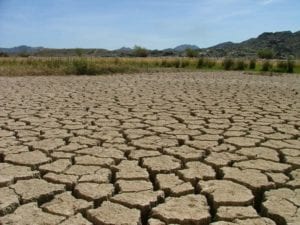The World Bank has just released its report on climate change and it does not bode well for the future. It provides a snapshot of recent scientific literature and new analyses of likely impacts and risks that would be associated with a 4°C warming within this century. The reports states: “A 4°C world would be one of unprecedented heat waves, severe drought, and major floods in many regions, with serious impacts on ecosystems and associated services. But with action, a 4°C world can be avoided and we can likely hold warming below 2°C. Without further commitments and action to reduce greenhouse gas emissions, the world is likely to warm by more than 3°C above the preindustrial climate. Even with the current mitigation commitments and pledges fully implemented, there is roughly a 20% likelihood of exceeding 4°C by 2100. If they are not met, a warming of 4°C could occur as early as the 2060s. Such a warming level and associated sea-level rise of 0.5 to 1 m, or more, by 2100 would not be the end point: a further warming to levels over 6°C, with several meters of sea-level rise, would likely occur over the following centuries.”
The global community may have made a commitment to hold warming to below the two-degree mark but, the sum total of current policies will in all likelihood lead to warming far in excess of these levels. And it gets worse. Small Island Developing States and Least Developed Countries have identified global warming of 1.5°C as warming above which there would be serious threats to their own development and, in some cases their very survival. The World Bank states that “Indeed, present emission trends put the world plausibly on a path toward 4°C warming within the century.” A world in which warming reaches 4°C above preindustrial levels would be one with serious impacts on human systems, ecosystems, and associated services. This report is focused on developing countries, while recognising that developed countries are also vulnerable and at serious risk of major damages from climate change. A series of recent extreme events worldwide continue to highlight the vulnerability of not only the developing world but even wealthy industrialised countries. The Bank has acknowledged that uncertainties remain in projecting the extent of both climate change and its impacts but says that it has taken a “risk-based approach in which risk is defined as impact multiplied by probability.” While a lot of global focus has been placed on the impacts of developed countries on the livelihoods of developing nations, it is important to note that no one country or region will be immune to the impacts of climate change. The distribution of these impacts, however, is likely to be inherently unequal and tilted against many of the world’s poorest regions, which have the least economic, institutional, scientific, and technical capacity to cope and adapt. The report explains. • Even though absolute warming will be largest in high latitudes, the warming that will occur in the tropics is larger when compared to the historical range of temperature and extremes to which human and natural ecosystems have adapted and coped. The projected emergence of unprecedented high-temperature extremes in the tropics will consequently lead to significantly larger impacts on agriculture and ecosystems.• Sea-level rise is likely to be 15 to 20% larger in the tropics than the global mean.
• Increases in tropical cyclone intensity are likely to be felt disproportionately in low-latitude regions. • Increasing aridity and drought are likely to increase substantially in many developing country regions located in tropical and subtropical areas. There is still hope however. A warming of 4°C can still be avoided as numerous studies have shown – if emissions pathways are adjusted. Thus, the level of impacts that developing countries and the rest of the world experience will be a result of government, private sector, and civil society decisions and choices, including, unfortunately, inaction. The report elucidates the observed impacts and changes to the climate system. The concentration of the main greenhouse gas, carbon dioxide, has continued to increase from its preindustrial concentration of approximately 278 parts per million (ppm) to over 391 ppm in September 2012, with the rate of rise now at 1.8 ppm per year. The present carbon dioxide concentration is higher than paleoclimatic and geologic evidence indicates has occurred at any time in the last 15 million years. It emissions presently stand at 35 000 million tonnes per year (including land-use change) and, if policies remain absent, are projected to rise to 41 000 million tonnes by 2020. Global mean temperature has continued to increase and is now about 0.8°C above preindustrial levels. Global industrial players have called for substantial financial returns on the global carbon market as the only way to mitigate their business practice and reduce carbon emissions. Other measures include carbon tax and incentives for companies that go ‘green’. The reliance of human industry on fossil fuels is set to continue unless financial implications – in either direction – do not follow. The full report can be downloaded at www.climatechange.worldbank.org







